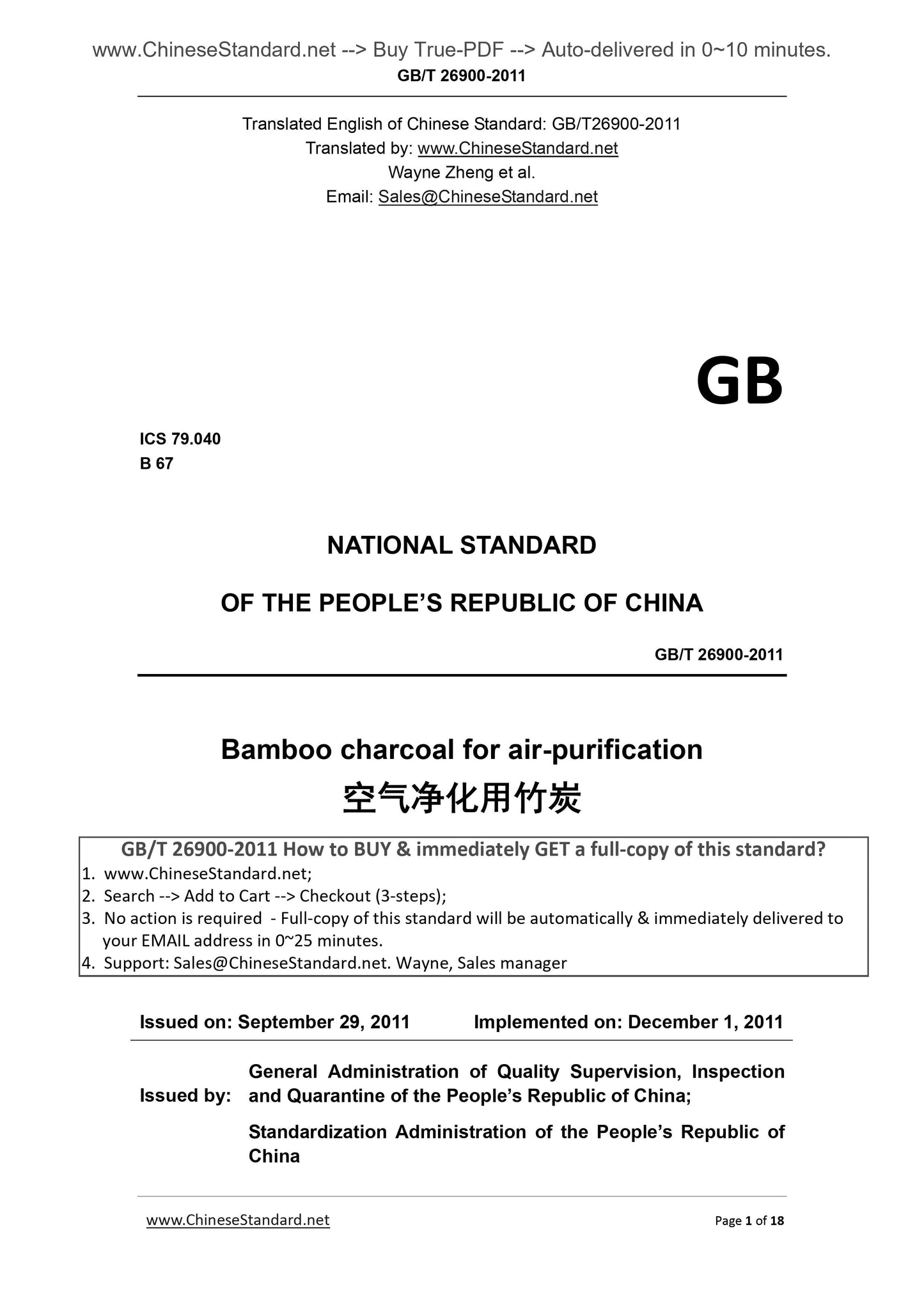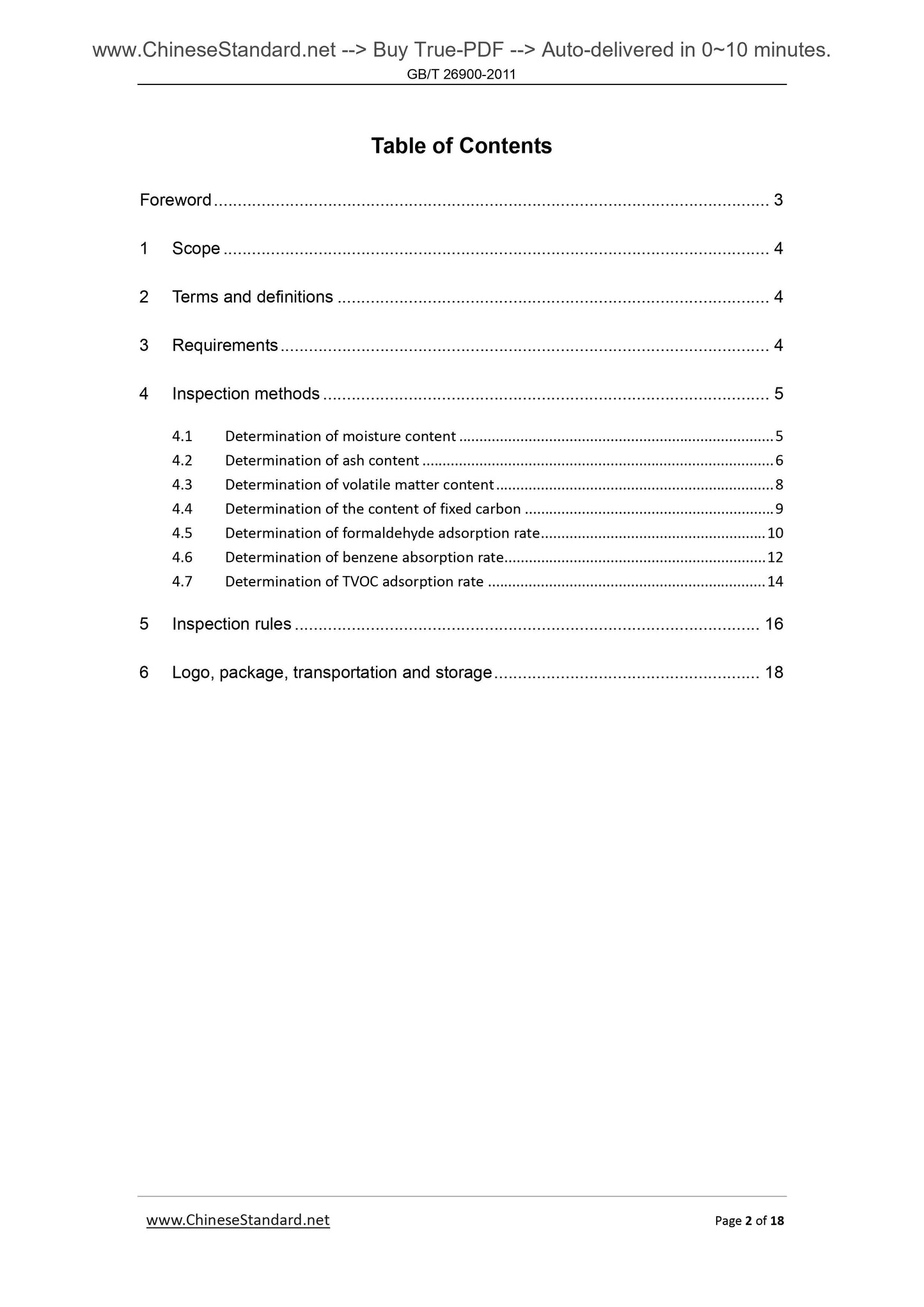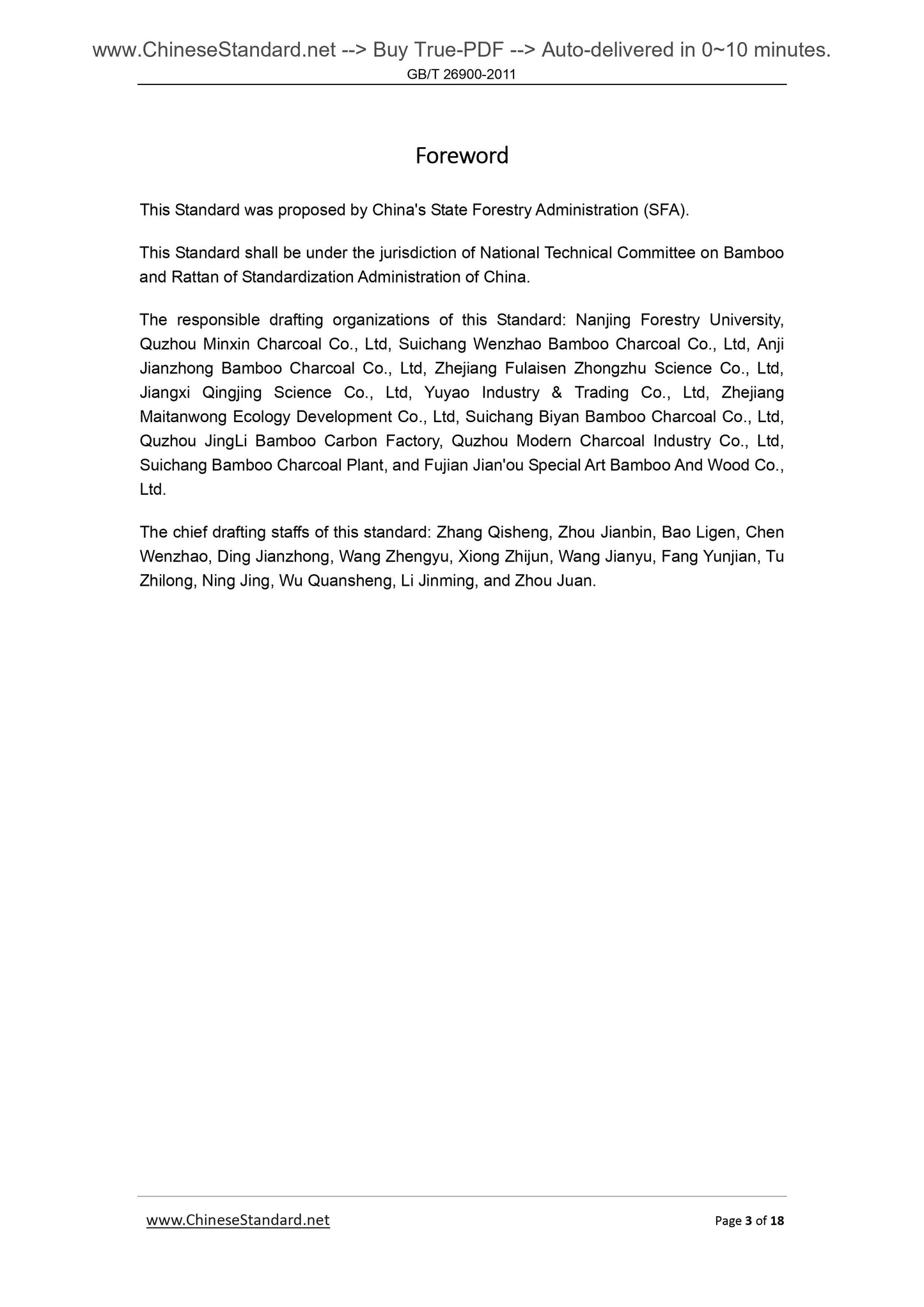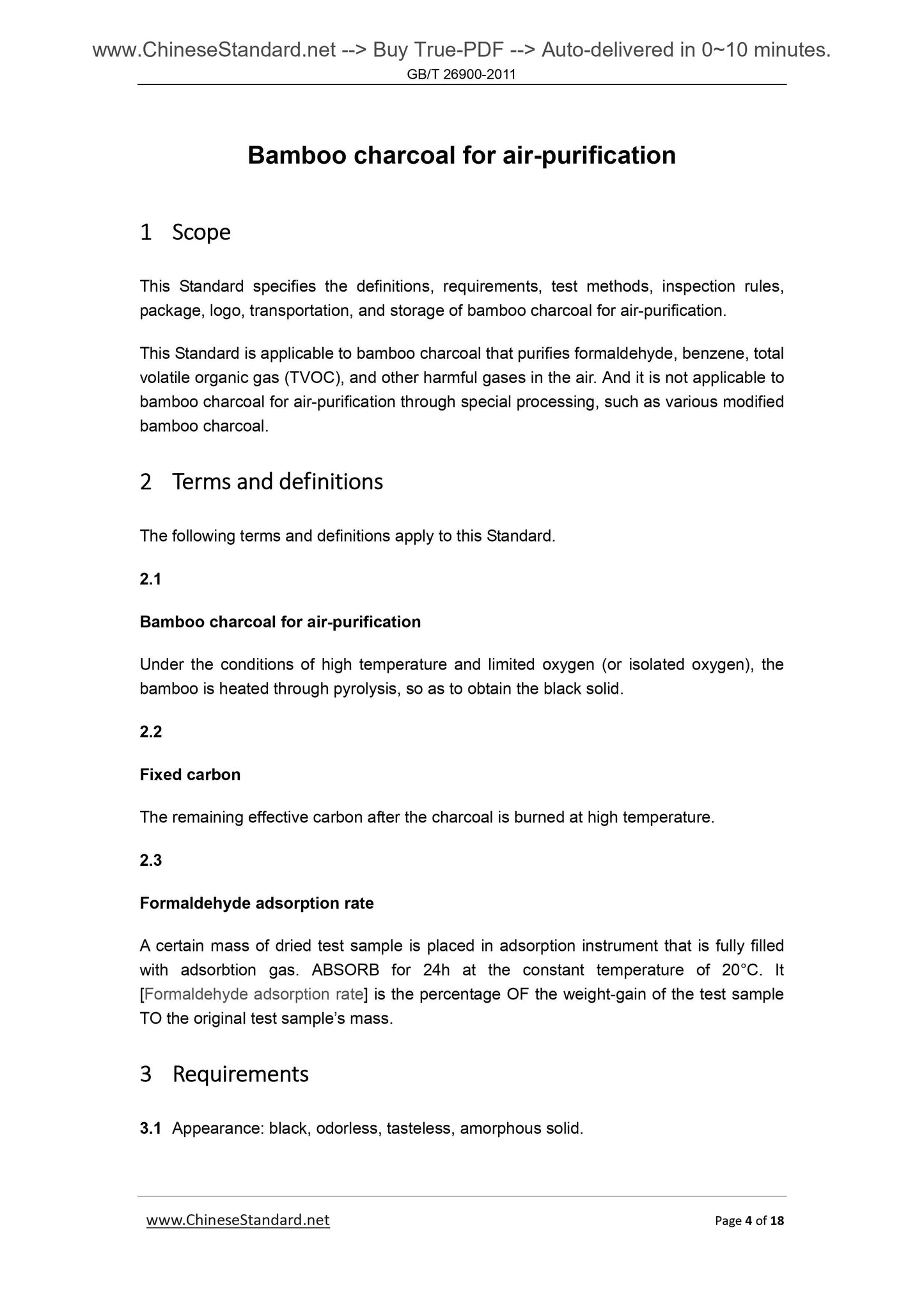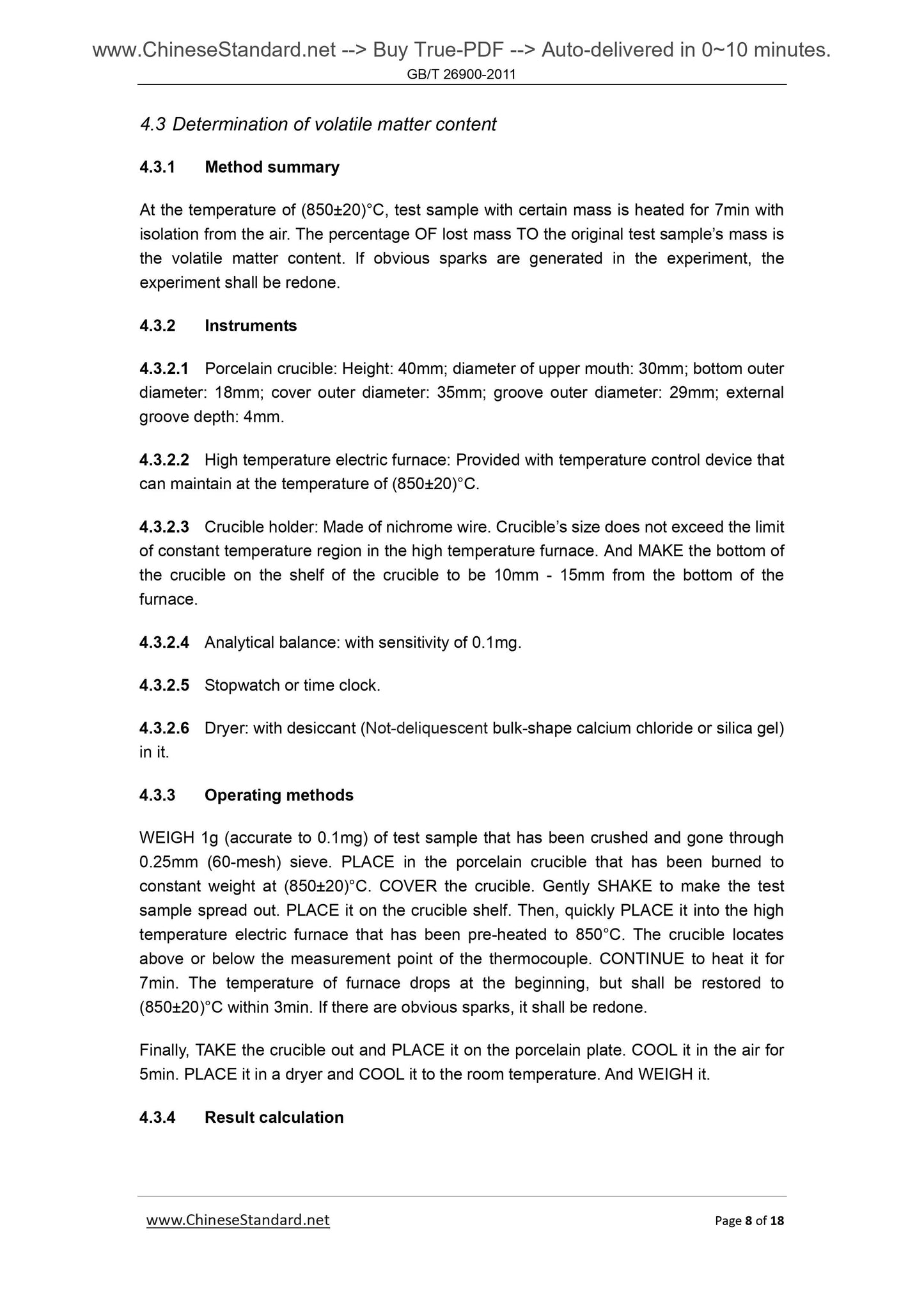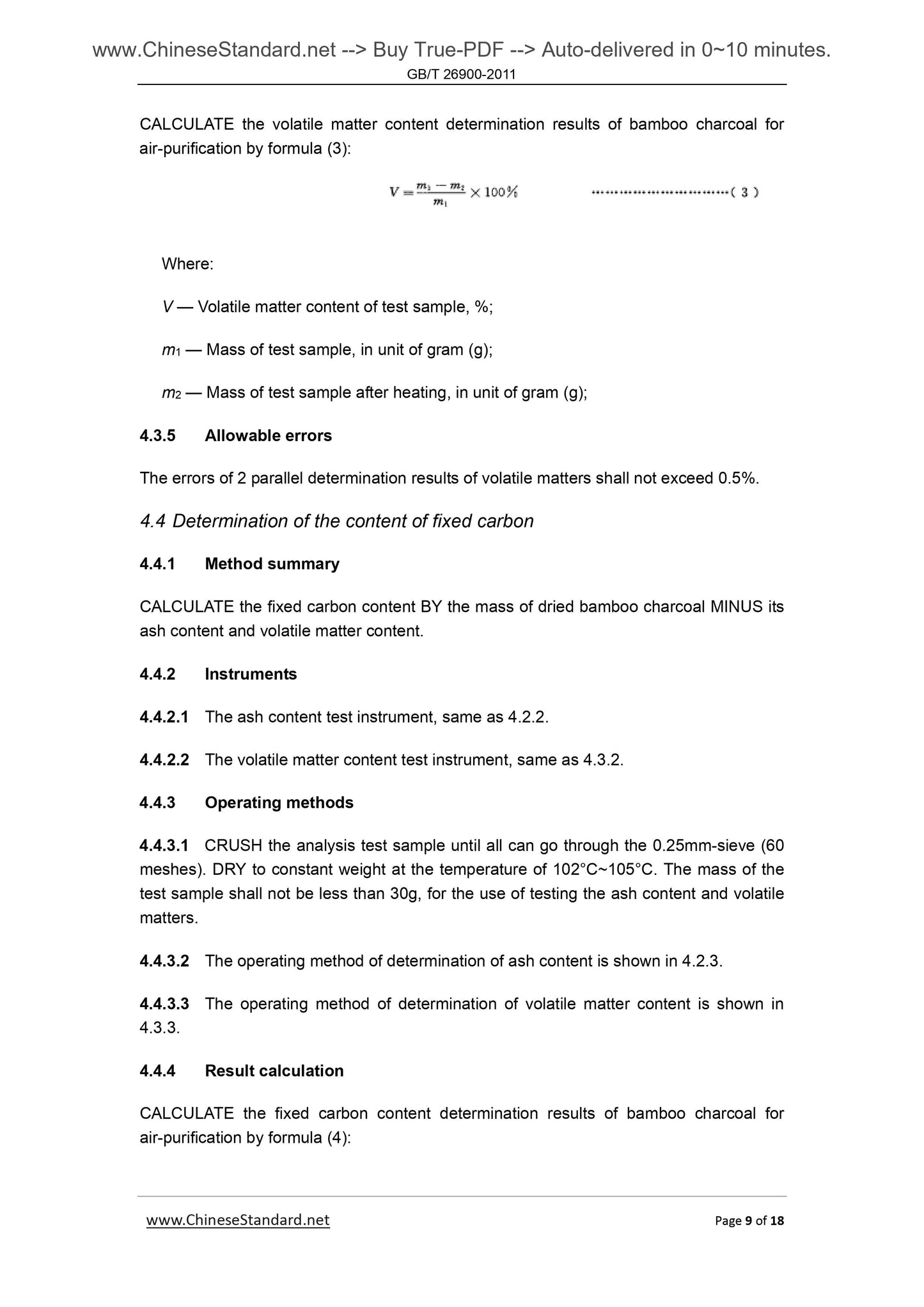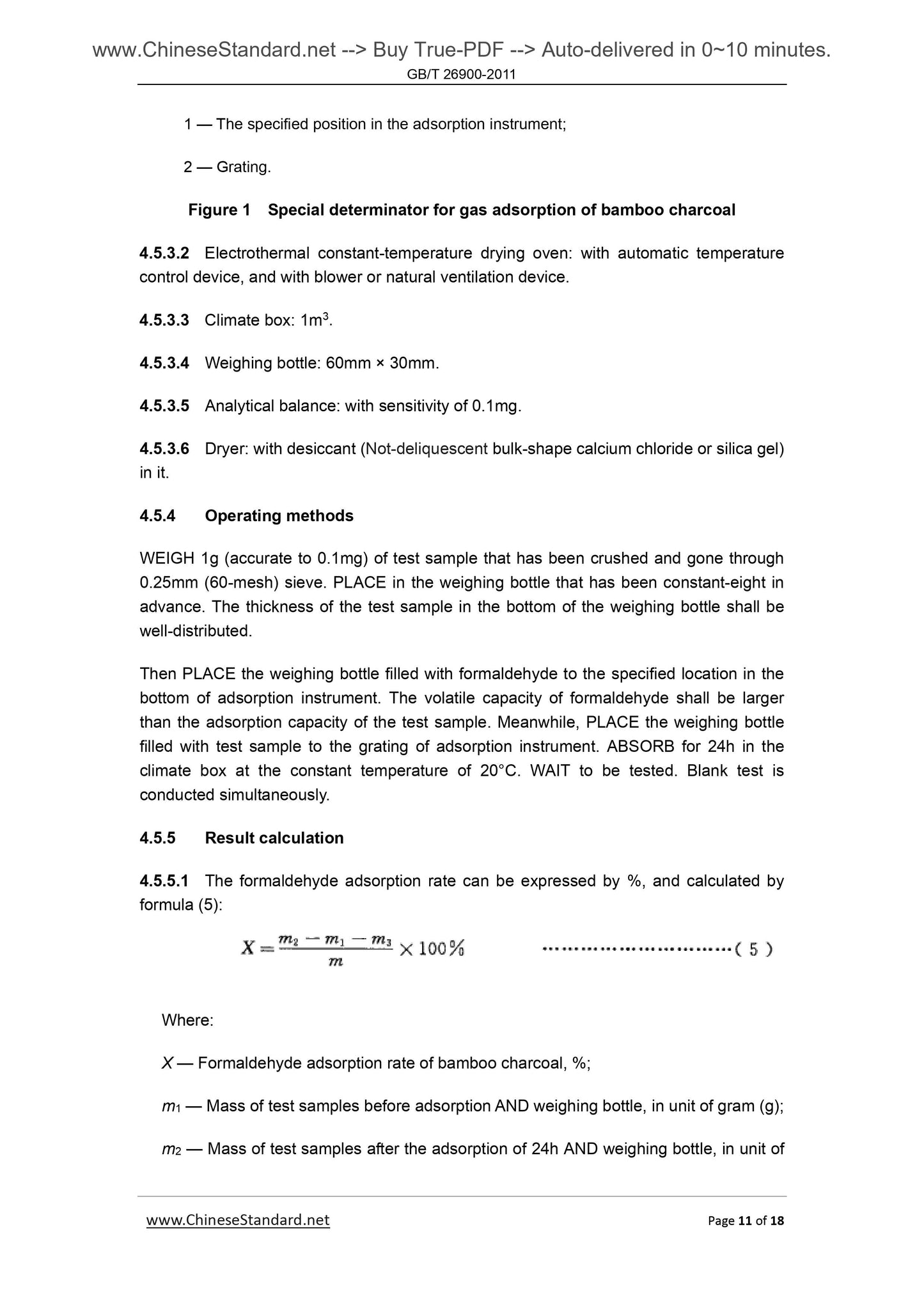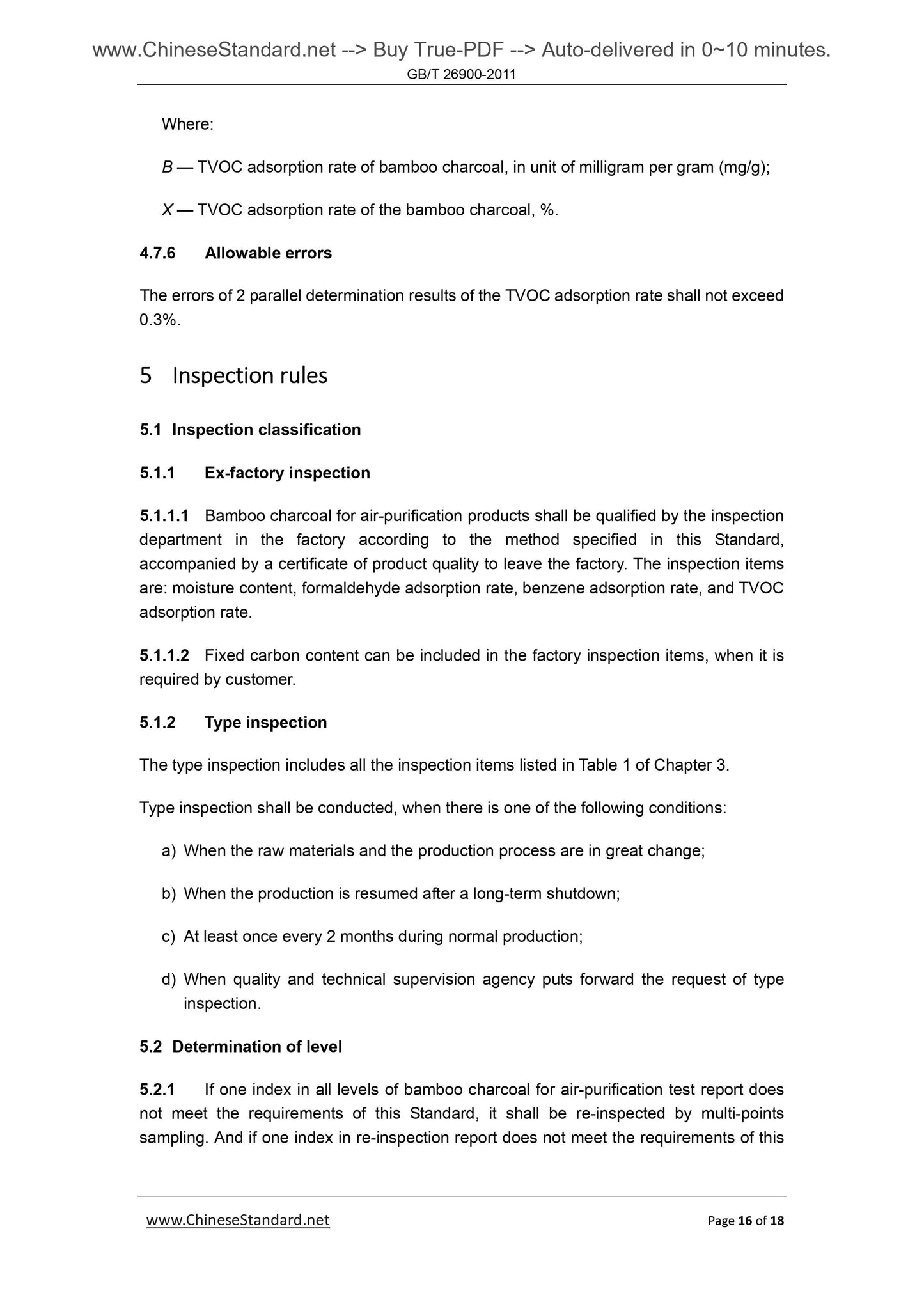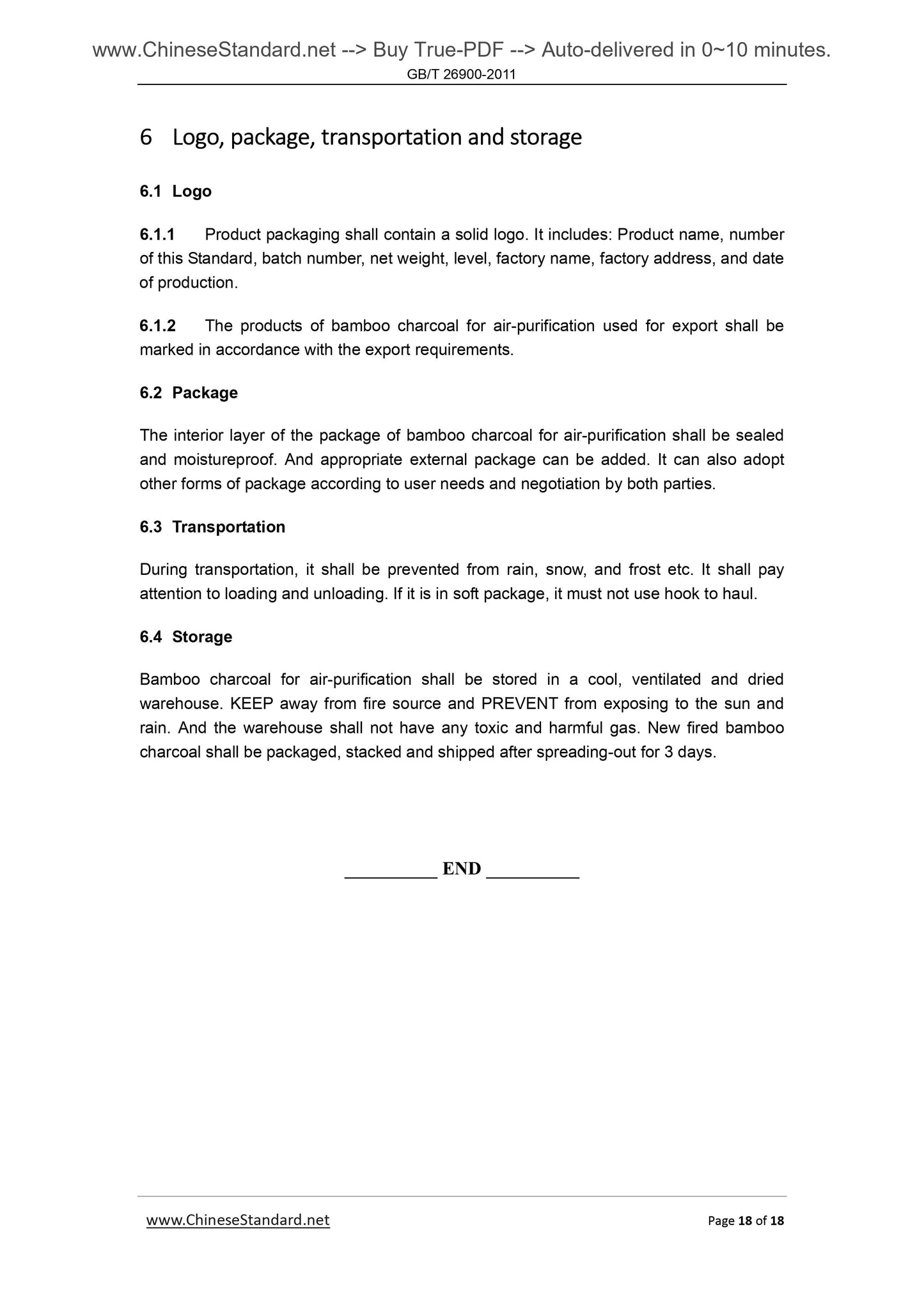1
/
of
9
www.ChineseStandard.us -- Field Test Asia Pte. Ltd.
GB/T 26900-2011 English PDF (GB/T26900-2011)
GB/T 26900-2011 English PDF (GB/T26900-2011)
Regular price
$90.00
Regular price
Sale price
$90.00
Unit price
/
per
Shipping calculated at checkout.
Couldn't load pickup availability
GB/T 26900-2011: Bamboo charcoal for air-purification
Delivery: 9 seconds. Download (and Email) true-PDF + Invoice.Get Quotation: Click GB/T 26900-2011 (Self-service in 1-minute)
Newer / historical versions: GB/T 26900-2011
Preview True-PDF
Scope
This Standard specifies the definitions, requirements, test methods, inspection rules,package, logo, transportation, and storage of bamboo charcoal for air-purification.
This Standard is applicable to bamboo charcoal that purifies formaldehyde, benzene, total
volatile organic gas (TVOC), and other harmful gases in the air. And it is not applicable to
bamboo charcoal for air-purification through special processing, such as various modified
bamboo charcoal.
2 Terms and definitions
The following terms and definitions apply to this Standard.
2.1
Bamboo charcoal for air-purification
Under the conditions of high temperature and limited oxygen (or isolated oxygen), the
bamboo is heated through pyrolysis, so as to obtain the black solid.
2.2
Fixed carbon
The remaining effective carbon after the charcoal is burned at high temperature.
2.3
Formaldehyde adsorption rate
A certain mass of dried test sample is placed in adsorption instrument that is fully filled
with adsorbtion gas. ABSORB for 24h at the constant temperature of 20°C. It
[Formaldehyde adsorption rate] is the percentage OF the weight-gain of the test sample
TO the original test sample’s mass.
Basic Data
| Standard ID | GB/T 26900-2011 (GB/T26900-2011) |
| Description (Translated English) | Bamboo charcoal for air-purification |
| Sector / Industry | National Standard (Recommended) |
| Classification of Chinese Standard | B67 |
| Classification of International Standard | 79.040 |
| Word Count Estimation | 13,194 |
| Date of Issue | 2011-09-29 |
| Date of Implementation | 2011-12-01 |
| Regulation (derived from) | National Standards Bulletin 2011 No. 14 |
| Issuing agency(ies) | General Administration of Quality Supervision, Inspection and Quarantine of the People's Republic of China, Standardization Administration of the People's Republic of China |
| Summary | This standard specifies the definition of air purification with charcoal, requirements, test methods, inspection rules, packaging, labeling, transportation and storage. This standard applies to purify the air of formaldehyde, benzene, total volatile organic gases (TVOC) and other harmful gases with charcoal, this standard does not apply to specially processed bamboo charcoal air purification, such as various modified charcoal. |
Share
